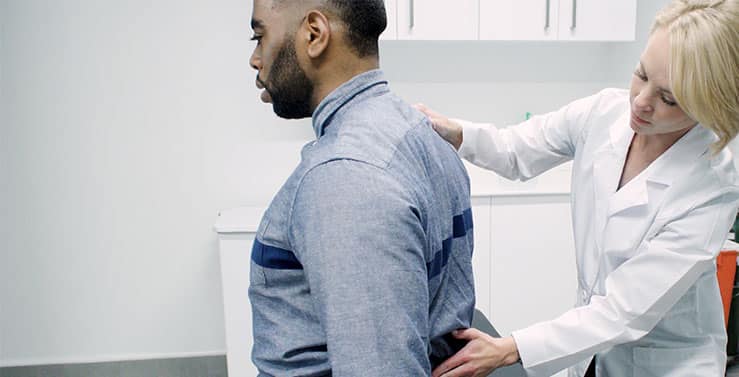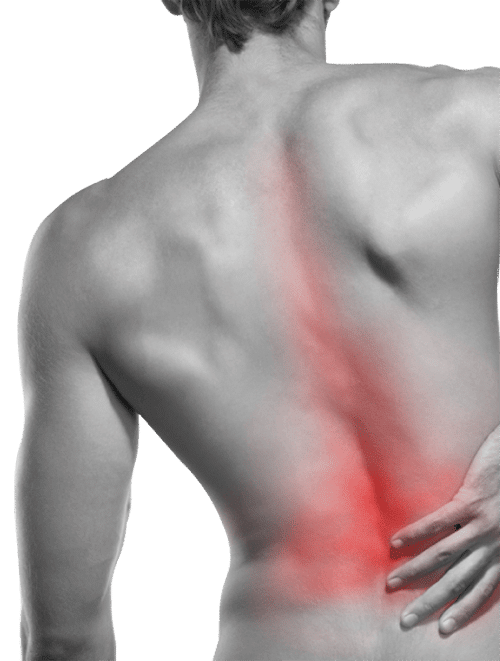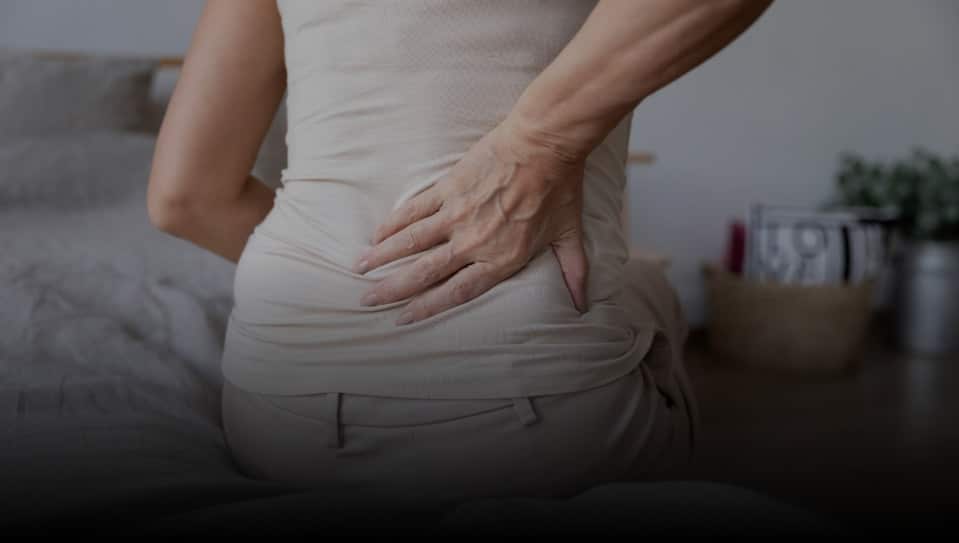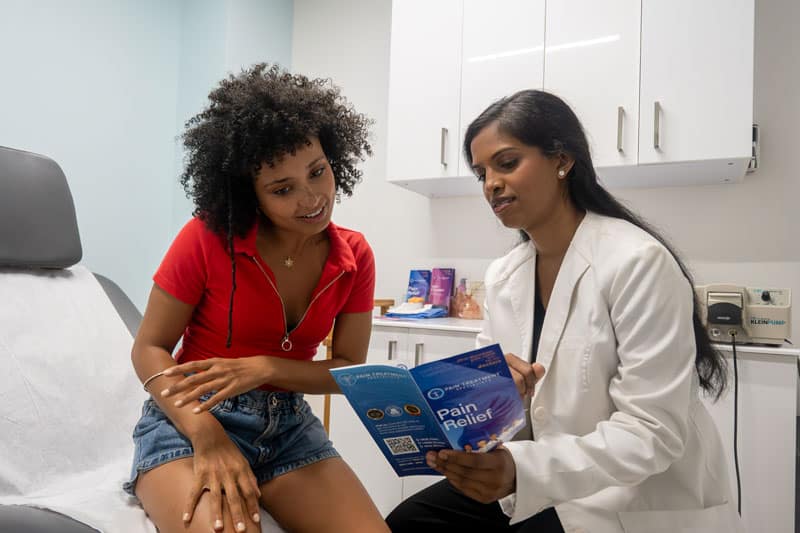The Best Non-Surgical Spinal Stenosis Treatments
If you suffer from spinal stenosis, you know how debilitating the condition can be. You may have difficulty walking, standing, or even sitting for long periods of time. The good news is that there are a number of non-surgical treatments that can provide relief. Our interventional back pain specialists in New Jersey perform comprehensive diagnostic tests to identify the root cause of spinal stenosis, following which we curate a personalized treatment plan. Depending on your conditions, your spinal stenosis treatment options include the following:
#1. Heat & Cold
Applying heat or cold to the affected area can help to reduce inflammation and pain. A heating pad, warm bath, or cold pack can all be effective. Be sure to not use heat or cold for more than 20 minutes at a time to avoid skin irritation.
#2. Physical Therapy
Physical therapy can help to improve your range of motion and strengthen the muscles around the affected area. The physical therapist will teach you exercises to stretch and strengthen the muscles around your spine. They will also help you learn how to sit, stand, and walk in a way that takes the pressure off your spine.

#3. Non-Steroidal Anti-Inflammatory Drugs (NSAIDs)
Non-steroidal anti-inflammatory drugs (NSAIDs), such as ibuprofen or naproxen, can help to reduce inflammation and pain. NSAIDs work by reducing the production of inflammatory chemicals in the body. This can reduce the swelling and pain associated with spinal stenosis. NSAIDs are available over-the-counter and by prescription. When used as directed, they are generally safe and effective.
#4. Epidural Steroid Injections
Epidural steroid injections are a more invasive treatment but can be very effective in relieving pain. The steroid medication is injected into the epidural space, which is the area around the spinal cord. A local anesthetic may also be injected to help numb the area. This minimally invasive treatment can reduce inflammation and pain.
Spinal Stenosis FAQs
What is spinal stenosis?
Your spine is made up of bones (vertebrae) that protect your spinal cord. The spaces between the vertebrae are called “neural foramina,” and they act as passageways for the spinal nerves. Spinal stenosis is a condition that occurs when the spinal canal narrows and puts pressure on the spinal cord or the nerves. This pressure can cause pain, numbness, or weakness in your back, legs, or neck.
What causes stenosis of the spine?
Spinal stenosis can be caused by a number of things. The most common cause of spinal stenosis is aging. As you get older, the bones and tissues in your spine begin to wear down. This can cause the spinal canal to narrow and put pressure on the spinal cord or nerves. The following are some of the other causes of stenosis of the spine:
- Osteoarthritis is the most common type of arthritis. It occurs when the cartilage between the vertebrae begins to break down. This can cause the bones to rub together and narrow the spinal canal.
- Rheumatoid arthritis is a less common type of arthritis that occurs when the body’s immune system attacks the joints. This can cause the joints to swell and the spinal canal to narrow.
- Bone spurs (osteophytes)are also a common cause of spinal stenosis. These are small outgrowths of bone that can form on the vertebrae. They are often the result of osteoarthritis or other degenerative conditions.
- Compression fractures are another cause of spinal stenosis. These occur when the vertebrae collapse due to weakened bones. This can happen due to osteoporosis (a condition that causes the bones to become weak and porous) or trauma.
- Tumors can also cause spinal stenosis. These can be either cancerous or noncancerous. Cancerous tumors can spread to the spinal cord and compress it. Noncancerous tumors can also compress the spinal cord or nerves.
- Spinal stenosis can also be caused by a birth defect or injury.
What are the symptoms of spinal stenosis?
The most common symptom of spinal stenosis is back pain. This pain can range from mild to severe. It is often worse with activity and relieved by rest. Other symptoms of spinal stenosis include:
- Numbness or tingling in the legs or arms
- Weakness in the legs or arms
- Difficulty walking or standing for long periods of time
- Loss of balance
- Loss of bladder or bowel control
Can I do physical therapy for cervical stenosis?
Cervical stenosis is a condition in which the spinal canal narrows, putting pressure on the spinal cord. This can cause pain, numbness, and weakness in the arms and legs. Physical therapy can help relieve these symptoms and improve quality of life. Physical therapists are trained to assess and treat cervical stenosis. They use a variety of techniques, including exercises, manual therapy, and electrical stimulation.
When is spinal stenosis surgery necessary?
In general, surgery is only necessary when conservative treatment options (such as physical therapy, pain medication, etc.) have failed to provide relief from symptoms. Additionally, surgery is typically only recommended if the spinal stenosis is causing significant nerve pain or weakness and/or if it is limiting your ability to perform daily activities.
Schedule an Appointment
Back Center New Jersey is a state-of-the-art medical center led by some of the country’s leading board-certified interventional pain specialists. Our back specialists diagnose the root cause of spinal stenosis and curate personalized treatment plans consisting of lifestyle changes, exercise, physical therapy, and non-surgical treatments. We only recommend spinal surgery if all other non-surgical options fail.
You can find our back centers in Paramus, Clinton, West Orange, and Woodland Park. Our Clifton office is located on Route 46-E, right off NJ -3, and near the garden state parkway. Please schedule an appointment at your nearest back center in New Jersey.





